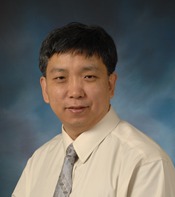Program Information
QA for Modern Radiation Therapy
Y Yang1*, R Wiersma2*, D Yang3*, (1) Stanford University Cancer Center, Stanford, CA, (2) The University of Chicago, Chicago, IL, (3) Washington University in St Louis, St Louis, MO
Presentations
7:30 AM : Autonomous QA strategy for digital LINACs - Y Yang, Presenting Author8:10 AM : Machine QA data standardization through online collaborative systems - R Wiersma, Presenting Author
8:50 AM : Improved safety, quality and efficiency in radiotherapy with automated health information technology - D Yang, Presenting Author
TU-AB-FS1-0 (Tuesday, August 1, 2017) 7:30 AM - 9:30 AM Room: Four Seasons 1
Radiation therapy is a complex process involving many sophisticated human-machine interactions, advanced technology, and decision making steps that must be repeated many times per day. Due to this high level of complexity, technological failure or human error can more readily occur, potentially leading to patient injury. It is therefore important that quality assurance (QA) mechanisms are in place to avoid such incidences. Currently, many of these QA tests are manual in nature and require multiple instances of data collection and analysis. With recent advances in modern digital LINAC technology, data management, and machine learning methods these procedures can be autonomously operated through pre-programming. This leads to the possibility of implementing streamlined and automated methods for completing QA tests in a manner that is more accurate, efficient and comprehensive than human workers.
This session will cover recent advances in several areas of modern QA. Topics will include autonomous QA for digital LINAC technology, QA protocol generation and data management, and semi-automate electronic chart checking systems.
Learning Objectives:
1. Understand the advantages of autonomous QA for digital LINACs and the issues relative to the clinical implementation of autonomous QA.
2. Understand that proper QA protocols and data standardization methods are necessary for patient safety and for data sharing and analysis.
3. Understand that automated physics software tools can be useful to detect errors, to improve patient safety and to improve work flow efficiency.
Handouts
- 127-35237-418554-127106.pdf (R Wiersma)
Contact Email:





